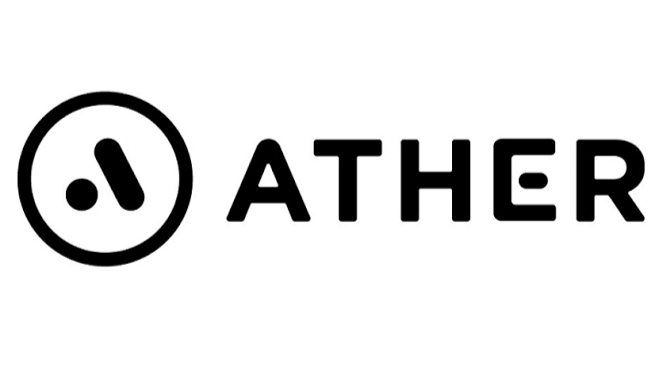MUMBAI, NATIONAL, 25 APRIL, 2025 (GPN): Ather Energy is a pioneer in the Indian E2W market. They design and develop E2Ws, battery packs, charging infrastructure, associated software and accessories, while they manufacture their battery packs and assemble their E2Ws in-house. They are a pure play EV company that designs all their products ground-up in India. According to the market share they were the 3rd and 4th largest player of the E2W market in FY24 and FY25, respectively.
Ather Energy has continued its journey of scaling up operations, with vehicle sales rising 45% YoY to 1.08 lakh units in the 9 months ended December 2023. Also, when compared to FY22 figures, Vehicle sales grew from 23,000 in 2022 to over 1.10 lakh in 2024 with a compounded growth rate of over 250%. While annual volumes grew to 1.10 lakh units in FY24, revenue per unit declined, bringing total operating revenue to ₹1,753.8 crore, almost flat YoY signaling the competitive market pricing. The adjusted gross margin improved significantly to 19% for the 9-month period, signaling early signs of operational efficiency.
However, EBITDA losses remained high at ₹649.4 crore in FY24, with a negative margin of 36%, though an improvement from FY23. Notably, as the company held an 11.5% market share in the E2W segment by FY24-end, the focus now shifts to narrowing losses and sustaining revenue momentum. Ather’s road ahead will depend on how efficiently it converts scale into profitability.
Factors driving next phase of growth to India’s E2W Industry
The Indian 2W market is expected to further grow at a CAGR of approximately ~7% between FY24 and FY31 to reach a market size of 2.9 to 3 crore in FY31. Apart from domestic sales, Indian 2Ws are also exported. India’s middle class is expected to grow to a population of 71.5 crore by FY31 from 43.2 crore in FY21. India’s per capita income is expected to grow at 9.2% CAGR over CY24 to CY29. The growth in per capita income and discretionary spending is expected to lead to a corresponding increase in the demand for premium products and experiences. Further, In FY25, the TCO of an E2W, including subsidies, was 52% lower than that of an ICE 2W for an annual running range of 8,000 km for the same period.
However, reduction in the acquisition price gap, coupled with the wide range of technological features offered by E2Ws are expected to further drive EV penetration. Scooters are expected to lead the electrification of the 2W market in India, with the penetration of electric scooters expected to reach approximately 70% by FY31. The E2W segment is expected to grow at a CAGR of approximately 41% to approximately 44%. Such expansion will make it one of the fastest growing segments in the automotive industry in India.
Ather: Well set to capitalise the E2W Market opportunity
Ather has a vertically integrated approach to the design of their products and key technologies, which has enabled them to pioneer several EV technological advancements. Through this approach towards design, they seek to establish new standards for performance, efficiency and user experience in the E2W market.
Ather’s technological innovations are enabled by their in-house design and research and development (“R&D”) capabilities. Their R&D team had 731 on-roll employees, housed at 3 R&D facilities in Bengaluru, India, as of December 31, 2024. They had 46% of their total workforce dedicated to R&D as at December 31, 2024. As of February 28, 2025, globally, Ather had 303 registered trademarks, 201 registered designs and 45 registered patents, in addition to pending applications for 102 trademarks, 12 designs and 303 patents.
The company assembles their E2Ws and manufactures their battery packs at their manufacturing facilities located near Hosur, Tamil Nadu. At the Hosur Factory, they had a total annual installed capacity of 420,000 units for E2Ws and 379,800 units for battery packs as of December 31, 2024. They are in the process of building the first phase of their factory 3.0 in Chhatrapati Sambhaji Nagar, Maharashtra to expand their total installed production capacity to 1.42 million E2Ws upon completion of Phase-2. The company operates an asset-light distribution model comprising experience centres and service centres operated by their third-party retail partners in India and through an authorised distributor in Nepal and Sri Lanka. They place an emphasis on capital efficiency across their value chain and prioritise control over design and technology, while maintaining operational flexibility.
Way Forward
With India being one of the largest 2W domestic markets globally, it has a unique opportunity to leverage its domestic market scale and manufacturing competitiveness for the export market. This, together with the industry-wide trend of electrification afford Indian E2Ws an opportunity to amass a larger share of the global 2W market. The global 2W market is expected to reach 8 to 8.2 crore units by 2029.
The trends of electrification and premiumisation hence present a large domestic and international opportunity for E2W players. Quality, software capabilities, control over design of key components, unit economics and supply chain resilience are key factors for success in EVs.


Be the first to comment on "Bigger volumes, Better Margins: Ather pioneers Indian E2W Market"